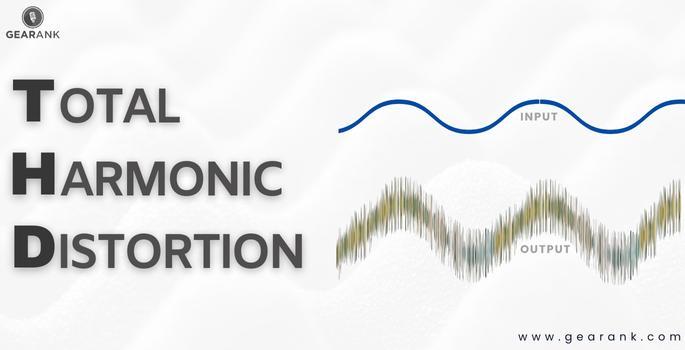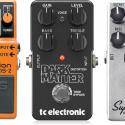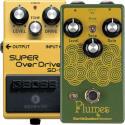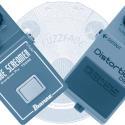THD Stands for Total Harmonic Distortion. What are its Effects

Eddie Van Halen and Jimi Hendrix are synonymous with their unique sound created by audio distortion. Although distortion is a recognizable sound, the technical aspects of its creation are not common knowledge.
This article will provide an in-depth analysis of Total Harmonic Distortion (THD).
What Is THD?
The concept of Total Harmonic Distortion (THD) is a crucial aspect of audio and electronics. It is a metric that determines the level of distortion that occurs when an input signal is transmitted through a system, such as speakers or amplifiers. Essentially, THD provides an estimate of how much the output signal deviates from the original input.
In the fields of science and electronics, measuring THD involves introducing noise or inaccuracies into the system. This process is essential in identifying non-linearities that affect electronics in various ways. Therefore, it is important to minimize THD to ensure that power supplies and electric power systems remain stable and safe.
THD poses a challenge for audio or live sound engineers because the input signal passing through the output may have additional harmonic content or noise. This fundamental component can have an impact on the sound quality, which is why minimizing THD is a critical aspect of audio engineering.
When calibrating speakers, designers aim to keep THD at a minimum by ensuring that the output waveform is as similar as possible to the input signal. This helps to produce a clean and accurate sound that closely resembles the original recording.
How is THD measured?
In order to estimate the THD measurement of a device, a THD+N measurement is taken, which stands for Total Harmonic Distortion and Noise.
The most common method of measuring this is by inputting a sine wave and using a notch filter for the output. By comparing the ratio of the measured output signal with and without the sine wave, the THD+N can be determined. A notch filter is used to remove the input frequency and energy, and the system measures the ratio of the total energy at the notch filter's output.
Another method used to calculate THD measurement is by using a voltage harmonic distortion analyzer, which performs a similar function, usually by measuring RMS voltage and computing for RMS value. It measures the ratio between the harmonic component and the fundamental signal.
THD And Sine Waves
When it comes to audio, the utmost priority of any audio equipment or system is to accurately reproduce or convey the input audio signal. In order to achieve this, an ideal, linear audio device should produce an output signal that closely replicates the input signal, with minimal distortion.
Distortion, in the context of audio, refers to any factor that modifies the input signal apart from its amplitude.
To identify any audio signal distortion, a pure sine wave is typically employed to stimulate the device, and the output is then subjected to a spectral analysis. Sine waves are used for this purpose because a pure sine signal comprises only one frequency, which makes detecting distortion in all power systems much easier.
The sine wave can also be used to examine the frequency spectrum. Harmonic distortion, in particular, is known to broaden this spectrum in the system output. As a result, it is safe to assume that the lower the THD (Total Harmonic Distortion) value is, the better the audio quality is. The stronger the harmonic components, the more distortion there is.
This is because the input signal has undergone minimal distortion and remains pure. As a result, it will sound crisp and clear, just as if the audio is being heard live.
In many harmonic frequency graphs or audio equipment specifications, THD is expressed as a percentage in the amplifier section. The same principle applies here: the lower the percentage value, the better the sound quality. A THD that is as close to 0% as possible is recommended for optimal sound quality for audio equipment such as headphones, earphones, or speakers.
By minimizing distortion, the audio device can accurately reproduce the input signal and deliver high-quality sound that is free of any unwanted noise or distortion.
Should You Keep An Eye On THD?
The Total Harmonic Distortion (THD) may not always concern most people, especially on modern amplifiers where the levels are generally quite good and almost unnoticeable, typically ranging from 0.1 to 0.5%. However, distortion is regarded as undesirable in the case of audio reproduction as it affects the precision of the sound intended to be reproduced through speakers or headphones, which is a common goal for Hi-fi products.
Audio manufacturers aim to reduce distortion as much as possible to achieve accurate audio reproduction by employing various methods, although not all of these methods are equally effective. It's important to note that while distortion can be used as a creative choice in music production, in audio reproduction, it is considered a flaw that needs to be minimized.
Why Does Distortion Occur?
Distortion is a phenomenon that alters the waveform of an audio signal, resulting in a significant difference between the input and the output. Non-linear distortion is a type of distortion that arises when a system receives a test tone as an input, but the output consists of multiple frequencies.
Distortion can occur at any point in the audio signal chain, including recording, playback, mixing, and processing stages. The presence of distortion can be attributed to several factors, such as room reverb, file compression, headphone resonance, and mastering music.
Reducing distortion (not used creatively, at least) during the mixing process is crucial for achieving a pure and high-quality audio track. One effective technique for minimizing distortion is by using a compressor. A compressor can help produce cleaner sounds by regulating the audio signal's dynamic range.
What Are Harmonic Frequencies?
Sound waves consist of fundamental and harmonic frequencies, which are the building blocks of music. Understanding these frequency components is crucial in comprehending how they impact audio quality.
The human ear can distinguish between different musical instruments thanks to the interaction of harmonic and fundamental frequencies. These frequencies contribute to the unique sound produced by each musical instrument and singer.
For instance, when a violin plays a middle A note, it generates a fundamental frequency of 440 Hz, accompanied by harmonic frequencies. Similarly, a cello playing the same note produces its distinct sound due to its specific harmonic and fundamental frequency.
Harmonic frequencies are multiples of the sound's fundamental frequency, and their interaction is essential in creating the characteristic sound of musical instruments and voices.
Everyone Interprets THD Differently
For most purposes, various kinds of harmonics are different. In some cases, harmonic frequencies are produced by crossover distortion. Specific frequencies are almost as powerful as greater frequency harmonics, even while being lower.
A single THD number needs to be revised for assessing audibility and should be looked at with caution. Over the years, much research has gone into harmonic distortion and harmonic control. It has shown that lower-order harmonics are more difficult to hear at the same level as higher-order ones. Therefore, THD is a sum of several harmonics with equal weighting.
As a result, the level of THD can be interpreted differently. For instance, some people may think the levels are too high as they can notice the distortion. For others, these levels are pretty decent, and the distortion is barely noticeable for them.
Conclusion
Now you know what THD is and how it can affect your audio.
Total harmonic distortion (THD) isn't something you need to be overly worried about. This is because it is usually at a very low percentage.
As a result, it should be fine for your overall listening experience.
Harmonic distortion is often represented as a percentage. This will tell you the amount of distortion the input signal has gone through to reach the amplifier and output.
Keep your distortion levels to a minimum when it comes to music production. Keep an eye on your THD and keep it as low as possible.
Frequently Asked Questions
What Is Considered A Good THD Rating?
Generally, it is considered best to have a THD rating of 0.5 or less. You can go up to 0.7 if you have to, but you want that number as low as possible. The lower the number, the purer and better your audio will sound.
Why Can Harmonic Distortion Cause Problems?
If you have harmonic distortion, extra frequencies have intercepted your input frequency and signal. As a result, the output signal is distorted and doesn't sound as it should.
This is why you should aim to keep distortion to a minimum by using various plugins and other methods to keep distortion to a minimum. Otherwise, your audio will sound unnatural and won't be an enjoyable listening experience.
Where Can You Come Across THD?
THD is a measurement that measures the harmonic content of the output signal from an amplifier. Thus, you can see harmonic distortion in any amplifier, speaker, headphones, or earphone.
Contributors:
- Allen Articulo - Co-writer
- Jerry Borillo - Illustrator












